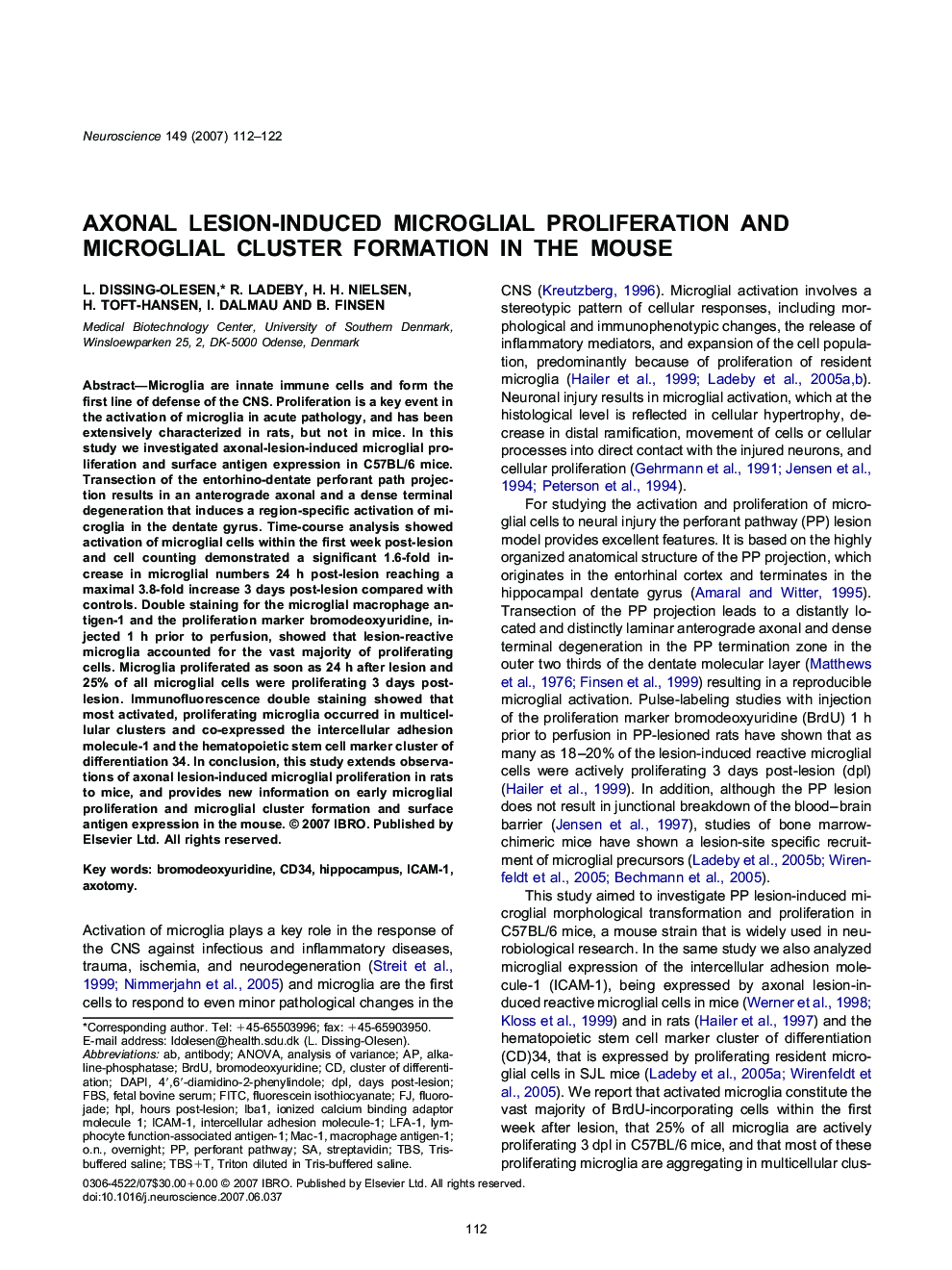| Article ID | Journal | Published Year | Pages | File Type |
|---|---|---|---|---|
| 4341202 | Neuroscience | 2007 | 11 Pages |
Abstract
Microglia are innate immune cells and form the first line of defense of the CNS. Proliferation is a key event in the activation of microglia in acute pathology, and has been extensively characterized in rats, but not in mice. In this study we investigated axonal-lesion-induced microglial proliferation and surface antigen expression in C57BL/6 mice. Transection of the entorhino-dentate perforant path projection results in an anterograde axonal and a dense terminal degeneration that induces a region-specific activation of microglia in the dentate gyrus. Time-course analysis showed activation of microglial cells within the first week post-lesion and cell counting demonstrated a significant 1.6-fold increase in microglial numbers 24 h post-lesion reaching a maximal 3.8-fold increase 3 days post-lesion compared with controls. Double staining for the microglial macrophage antigen-1 and the proliferation marker bromodeoxyuridine, injected 1 h prior to perfusion, showed that lesion-reactive microglia accounted for the vast majority of proliferating cells. Microglia proliferated as soon as 24 h after lesion and 25% of all microglial cells were proliferating 3 days post-lesion. Immunofluorescence double staining showed that most activated, proliferating microglia occurred in multicellular clusters and co-expressed the intercellular adhesion molecule-1 and the hematopoietic stem cell marker cluster of differentiation 34. In conclusion, this study extends observations of axonal lesion-induced microglial proliferation in rats to mice, and provides new information on early microglial proliferation and microglial cluster formation and surface antigen expression in the mouse.
Keywords
o.n.macrophage antigen-1FBSdays post-lesionFITCDPLHPLTBSICAM-1CD34LFA-1DAPIIBA14′,6′-diamidino-2-phenylindoleLymphocyte function-associated antigen-1StreptavidinaxotomyBrdUbromodeoxyuridineanalysis of varianceANOVATris-buffered salinecluster of differentiationfetal bovine serumalkaline-phosphatasefluorescein isothiocyanateFluoro-JadePerforant pathwayionized calcium binding adaptor molecule 1intercellular adhesion molecule-1Mac-1HippocampusAntibodyovernight
Related Topics
Life Sciences
Neuroscience
Neuroscience (General)
Authors
L. Dissing-Olesen, R. Ladeby, H.H. Nielsen, H. Toft-Hansen, I. Dalmau, B. Finsen,
